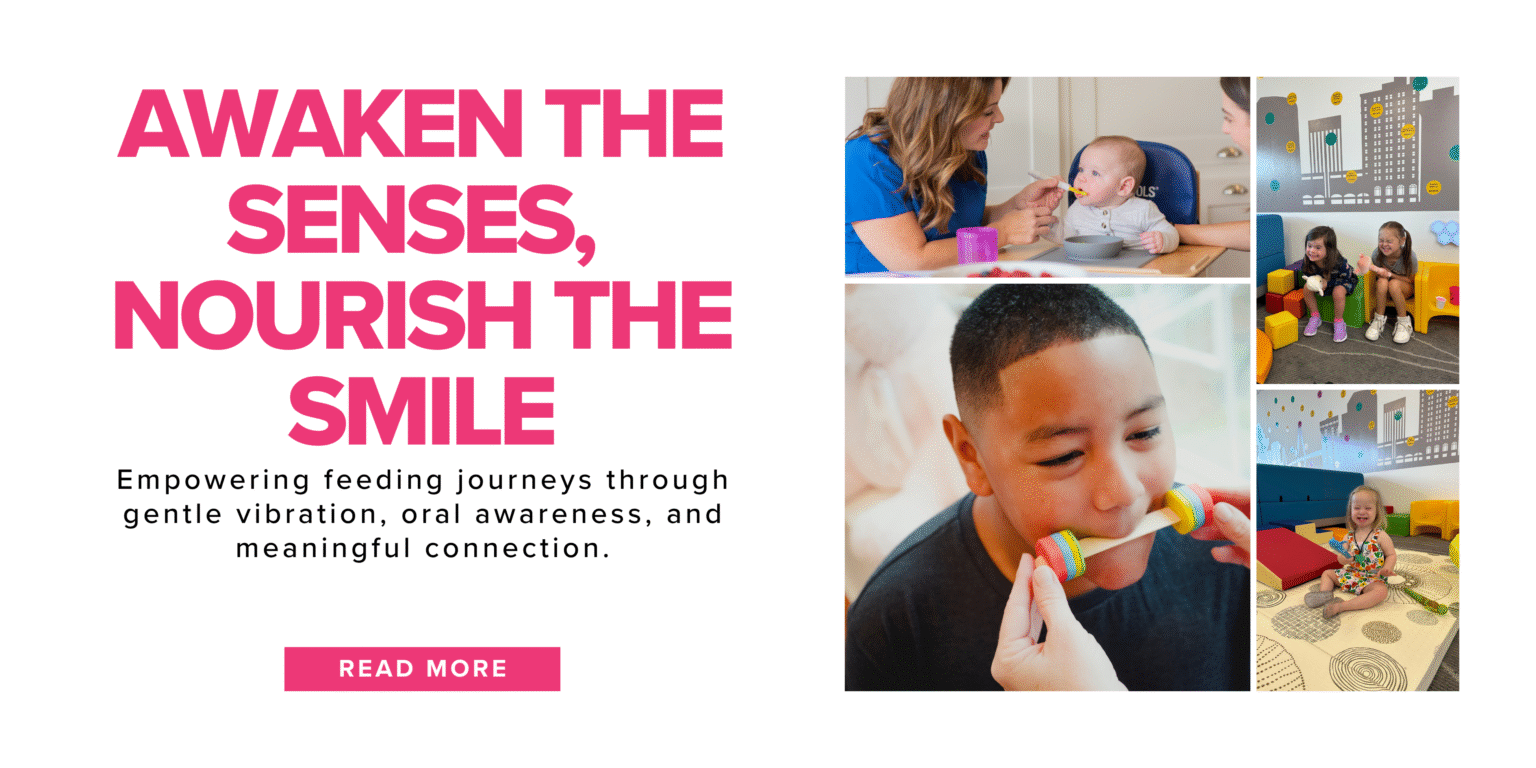From tongue-training to throat-scoping, learning and CEU-earning. What’s new at TalkTools?
1. FUNCTIONAL ASSESSMENT AND REMEDIATION OF TOTS (BOOK)
The dynamic duo Robyn Merkel-Walsh, MA, CCC-SLP and Lori Overland, MS, CCC-SLP, C/NDT, CLC have co-authored the new book, Functional Assessment and Remediation of TOTs.
Robyn and Lori have developed a comprehensive, evidenced-based program, the Merkel-Walsh & Overland TOTs Protocol, to assist in the identification and functional implications of TOTs — also known as Tethered Oral Tissue or tongue tie. The practical speech and feeding program includes a pre- and post-surgical treatment plan to avoid long-term issues, such as scarring and reattachment.
Functional Assessment and Remediation of TOTs is currently on pre-sale at a special discounted price of 50% off ($25 instead of $50!). Pre-order your book now!
![]()
There are also upcoming continuing education workshops for “Functional Assessment and Remediation of TOTs” in New York, Florida, Maryland and even Norway.
Check out our event calendar for upcoming TOTs workshops here.
2. LIPER DEVICE

This convenient device is useful for pre-and post-op neuromuscular re-education as taught by Robyn Merkel-Walsh and Lori Overland in their new TOTs course and text. The Liper was first brought to TalkTools therapists by Catherine Watson-Genna, IBCLC, and we are pleased to share this device with our customers.
Breastfeeding is clearly on the rise as recommended by the World Health Organization. Tongue-tie restricts the tongue from extending and elevating, impairing the baby’s ability to remove milk from the breast. Oftentimes, women who breastfeed tongue tied babies experience excessive pain and sores on the breast. They may be led to change to bottle feeding, and at TalkTools one of our goals in TOTs education is to support the breastfeeding dyad between the mother and child, with interventional support with an IBCLC.
Functional diagnosis of ankyloglossia is sometimes very difficult to perform. That said, in many studies, impaired breastfeeding has been shown as associated with psychological, social and numerous physical implications. Missing the diagnosis of tongue-tie can be associated with: articulation difficulties, Obstructive Sleep Apnea (OSA), SIDS, airway dysfunction, food allergies, dental & facial developmental anomalies, palate abnormalities and myofunctional disorders. The Liper Device can assist with assessment, therefore identifying the tongue-tie, and help the breastfeeding dyad move towards the proper medical referral.
No matter the degree of tongue-tie severity, the Liper device comes in handy. In many cases, proper tongue exercises with the Liper device can be used pre- and post-operatively when there is a need for frenotomy (a.k.a. frenulotomy or frenulectomy). Postoperative Active Wound Management (AWM) with the Liper device has been shown to improve post- surgical outcome; therefore helping ensure normal tongue flexibility and functioning while preventing frenulum reattachment and/or scarring. The Liper Device can also be used with toddlers and young children who are receiving pre- and post-op frenectomy therapy. The speech-language pathologist and/or registered dental hygienists trained in pediatric feeding and/or myofunctional therapy (COM™) can use this tool as a part of their AWM program. For example, the “V-Stretch” described Robyn and Lori in their TOTs course, is demonstrated with the Liper.
![]()
3. NEW BREATHER
The Breather is a respiratory muscle trainer (RMT) used for COPD (Chronic Obstructive Pulmonary Disease), CHF (Congestive Heart Failure), Dysphagia and Neuromuscular Disease patients.
This new model was designed by therapists, for therapists. It improves upon the success of the original Breather in service for over 30 years.
Clinical Benefits:
•Strengthens inspiratory muscles (diaphragm, external intercostals, accessory muscles of neck) and expiratory muscles (internal intercostals, abdominals)
•Helps in movement of hyolaryngeal complex
•Generates improved airflow through vocal folds
•Improves respiratory support for safe swallow function
•Improves protective cough and assists in airway clearance
•Promotes diaphragmatic breathing
•Decreases shortness of breath
•Improves blood flow to resting and exercising limbs
Features:
•Resistive Inspiratory and Expiratory Muscle Therapy (RMT)
•Adjustable and independent pressure settings
•Patient can be in any position for therapy
•Lightweight and portable
•Easy to use and clean
•FDA-approved Class #1 device
•Free and easy self-paced video protocol training for therapist and patient
![]()
4. THROAT SCOPE
The Throat Scope is an illuminated tongue depressor for convenient one-handed check-ups. Two powerful long-life LED lights are automatically activated when a blade is inserted. This device allows the provider to use a free hand to hold the patient in place, and can even be fun for patients. “Kids will think this is a lightsaber!” said Steve Baxter on Shark Tank Australia. The source of light located inside the mouth also allows better accuracy. Hailing from Australia, the Throat Scope came to the United States last year with TalkTools.
![]()
5. LIVE WEBINAR | AIRWAY, ORTHODONTICS, APNEA AND OPT FOR THE DOWN SYNDROME POPULATION
Heather Vukelich, MS, CCC-SLP, instructor of the new webinar, performs Oral Placement Therapy with her client Monica, who has Down Syndrome.“Airway, Orthodontics, Apnea and OPT for the Down Syndrome Population” is a new continuing education webinar in the TalkTools Live Webinars series. TalkTools Level 4 Advanced Therapist, Heather Vukelich, MS, CCC-SLP and Dr. Brian Hockel, DDS will be discussing how the posture and function of the jaw and mouth muscles affects speech, facial and jaw development, and even the airway. As breathing and speaking are vital to health and personal development, Heather and Brian will address the common root causes of speech, orthodontic, and sleep apnea problems and how TalkTools Oral Placement Therapy (OPT) can be an essential part of treatment. Heather will address specific issues with regard to Down Syndrome clients.
Friday, March 16 — 2-3:30 p.m. EST
.15 ASHA CEUs
![]()




